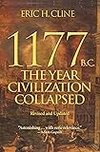Sublime
An inspiration engine for ideas
On the eve of the close encounter with the West, China’s distinctive political trajectory (still dominated by its symbiotic relationship with Inner Asia) propelled it not towards an all-powerful oriental despotism (imagined by Europeans) – which might have permitted drastic change in the face of external challenge – but instead still further toward
... See moreJohn Darwin • After Tamerlane: The Rise and Fall of Global Empires, 1400-2000
By enlarging Old Europe into a new Euro-Atlantic ‘world’, the Occidentals had acquired hinterlands as varied and extensive as those of the Islamic realm or East Asia. There was much less evidence in the later early modern age that this great enlargement in territorial scale would also bring about the internal transformation to which Europe’s subseq
... See moreJohn Darwin • After Tamerlane: The Rise and Fall of Global Empires, 1400-2000

For these empire-builders, the vast grassy steppe that stretched across Eurasia from Manchuria to Hungary was an open road to commercial wealth and almost limitless power. The trading cities of the Near and Middle East were a natural target.
John Darwin • After Tamerlane: The Rise and Fall of Global Empires, 1400-2000

Such trends compelled me to stand my ground. I worked to expose Said’s Orientalism screed, noting that the first experts on the Middle East came from Germany and Hungary, neither of which ever colonized the region.
Michael B. Oren • Ally: My Journey Across the American-Israeli Divide

Perhaps any of the great Eurasian states would have enjoyed a similar success: Tamerlane would have made short work of Montezuma. It was the Occident’s good fortune that its geographical position – closest to the Caribbean antechamber of the pre-Columbian empires – gave it a decisive lead in the acquisition of new lands in the Outer World.
John Darwin • After Tamerlane: The Rise and Fall of Global Empires, 1400-2000
On Europe’s Inner Asian frontier, demographic expansion long seemed as hobbled as it was in mainland North America until the 1750s.